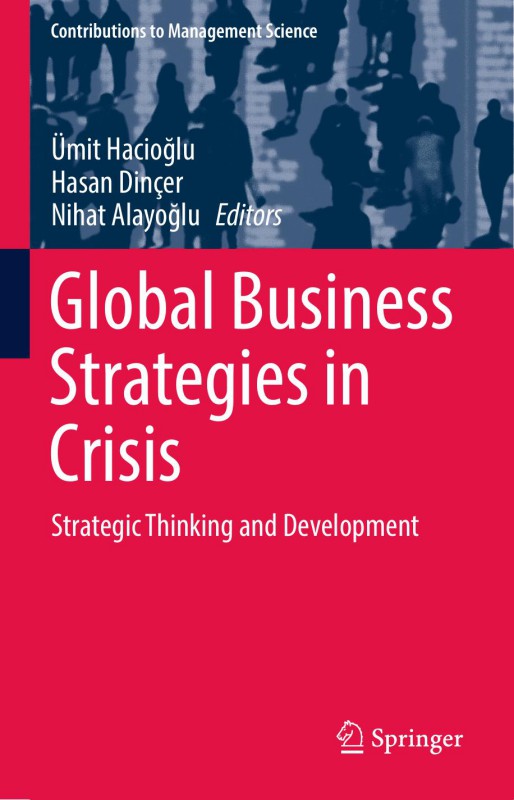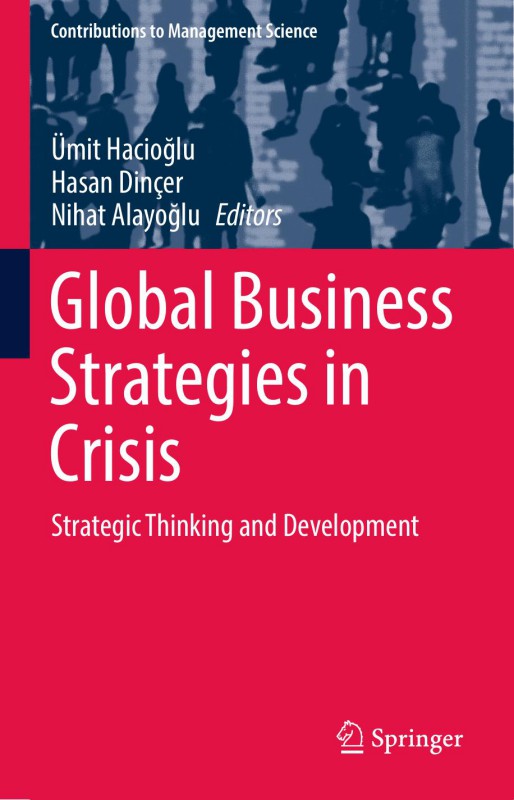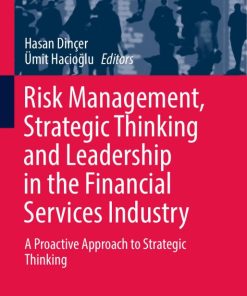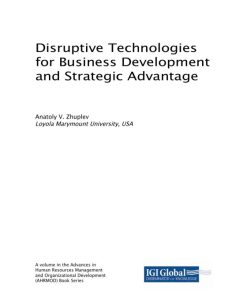Global Business Strategies in Crisis Strategic Thinking And Development 1st Edition by Ümit Hacioğlu, Hasan Dinçer, Nihat Alayoğlu 3319445901 9783319445908
$50.00 Original price was: $50.00.$25.00Current price is: $25.00.
Authors:Ümit Hacioğlu, Hasan Dinçer, Nihat Alayoğlu (eds.) , Series:Strategic Studies [9] , Author sort:Ümit Hacioğlu, Hasan Dinçer, Nihat Alayoğlu (eds.) , Languages:Languages:eng , Published:Published:Nov 2016 , Publisher:Springer
Global Business Strategies in Crisis Strategic Thinking And Development 1st Edition by Ümit Hacioğlu, Hasan Dinçer, Nihat Alayoğlu – Ebook PDF Instant Download/Delivery. 3319445901, 9783319445908
Full download Global Business Strategies in Crisis Strategic Thinking And Development 1st Edition after payment

Product details:
ISBN 10: 3319445901
ISBN 13: 9783319445908
Author: Ümit Hacioğlu, Hasan Dinçer, Nihat Alayoğlu
As the world is currently in the midst of financial and economic crises, this collection of expert contributions focuses on strategy formation and implementation at various organizational levels to address the challenges ahead. The latest economic turmoil and its ongoing impact on business performance are compelling top managers to develop effective business strategies and redefine the boundaries of their operational and strategic activities. On one hand, tremendous challenges in the competitive business environment have become a source of global threats for many small entrepreneurs. On the other, investors faced with today’s volatile economic conditions demand more gains on their capital investments to counter-balance the growing risk of global threats. This book explores the question as to whether it is possible to efficiently and effectively address these threats and obstacles. Are managers capable of planning and implementing strategic actions? What should the major managerial strategy be in order to overcome fluctuations in a market-oriented society? The strategies and practices recommended here are aimed to design continuous development competencies and contribute to the stability, recovery and sustainability of global business operations under volatile economic conditions. This refreshingly novel book seeks to establish managerial strategies and practices for effectively responding to challenges in the competitive business environment, as global volatility and fluctuations continue to worsen.
Global Business Strategies in Crisis Strategic Thinking And Development 1st Table of contents:
Part I: Strategic Management and Practices in High Velocity Markets During Crisis
Institutional Approach to Strategic Management
1 Introduction
2 Understanding the Role of Institutions for Strategy
3 An Institutional-Based View of Strategy: Institution-Based Rents and Strategies
4 Institutional Entrepreneurship
5 Conclusion
References
Economic Approach to Strategic Decisions
1 Introduction
2 Strategic Decisions
2.1 Background Information and Basic Concepts
2.2 Economic Theories over Strategic Decision
3 Price Strategies
4 Advertising
4.1 Views About Advertising
4.2 Advertising and Consequences
4.3 Advertising Intensity
5 RandD
5.1 Basic Definitions
5.2 Theories over RandD and Market Structure
5.3 Alternative RandD Strategies
6 Integration
6.1 Basic Definitions
6.2 Why Do Firms Integrate?
7 Conclusion
References
Leading the Strategic Decision-Making Process: Conceptual Frameworks
1 Introduction
2 Highlights of the Strategic Decision-Making Process
2.1 Critical Factors of Leading the Strategic Decision-Making Process
2.2 Need for Information Systems in Strategic Decision-Making
3 Managing the Strategic Decision-Making Process
3.1 Conceptual Framework of Success Factors
3.2 Conceptual Framework Reduced to Structural Equation Modeling
4 Conclusion
References
Building Organizational Insight: Strategy and Organization
1 Introduction
2 The Key of Sharing: The Creation of Synergies
3 Horizontal Strategies
3.1 Drawbacks of Horizontal Strategies
4 The Role of the Organization
4.1 Mechanisms of Organizational Coordination
4.2 Mechanisms of Network Coordination
5 Conclusion
References
Strategies Out of Global Recession in Emerging Markets: An Application for 2008 Global Crisis
1 Introduction
2 Literature Review
3 Strategies for Overcoming Financial Crisis
3.1 Monetary Policy Tools
3.1.1 Required Reserve Ratio
3.1.2 Currency Transactions
3.1.3 Open Market Operations
3.1.4 Discount Rate
3.2 Fiscal Policy Tools
3.2.1 Tax Rate
3.2.2 Public Debt
3.2.3 Government Expenditure
3.3 Other Strategies
3.3.1 Increasing Guarantee Limit of the Deposits
3.3.2 Purchasing Low-Performance Companies by Government
4 2008 Global Crisis
4.1 Reasons of the Crisis
4.2 Results of the Crisis
4.3 Strategies of Some Example Countries to Overcome the 2008 Global Crisis
4.3.1 USA
4.3.2 England
4.3.3 China
4.3.4 Turkey
5 Data and Econometric Model
5.1 The Scope and Constraints of the Study
5.2 Logit Model
5.3 Variables
5.4 Results of the Model
6 Conclusion
References
Alternative Strategies for Global Operations of Organizations
1 Introduction
2 Globalization
3 Possible Strategic Alternatives in Entering into Foreign Markets and Becoming an International Org
3.1 Outsourcing Strategy
3.2 Export Strategy
3.3 Licensing Strategy
3.4 Franchising Strategy
3.5 Joint-Venture Strategy
3.6 Direct Investment Strategy
4 Fundamental Strategic Options in International Competition
4.1 Multidomestic (Think Local/Act Local) Strategy
4.2 Global (Think Global/Act Global) Strategy
4.3 Transnational (Think Global/Act Local) Strategy
5 Conclusion
References
Part II: Designing Competitive Strategies, Leadership and Culture During Recession
Building Competitive Strategies and Managing Stakeholder Relations
1 Introduction
2 Stakeholder Management
2.1 Stakeholders Analysis
2.2 Developing Stakeholder Management Strategies
2.3 Stakeholder Management Process
2.4 Review of Stakeholder Management in the Business World
2.5 Strategic Stakeholder Analysis
2.6 Determining Share of Stakeholders
2.7 Determining Stakeholders´ Priorities
2.8 Determining How to Meet the Expectations of Stakeholders
3 Competitive Advantage Theory
4 Competitive Strategies
4.1 Cost Leadership
4.2 Differentiation
5 Hamel and Prahalad´s Competitive Strategy
6 Relations with Stakeholders and Business Performance
7 Developing Stakeholder Management Strategies
8 Relationships with Stakeholders, the Strategies for Managing Stakeholders, and the Relationship Be
9 Conclusion
References
Human Side of Strategic Alliances, Cooperations and Manoeuvrings During Recession and Crisis
1 Introduction
2 Effects of Crises on Organizations and Employees
3 Human Factor in Crisis Management
3.1 Developing Resistance Against Crisis
3.2 The Role of Employees in Strategic Crisis Planning
3.3 Effectiveness of Organizational Communication in Recession and Reorganization
4 Capacities and Strategic Manoeuvres That Provide Adaptation to Sudden Changes by Organizational Le
4.1 Reactions of Employees During Reorganization Process
4.2 From Classical Management to Lean Organizations for Adaptation to Sudden Changes
4.3 The Behaviours of Employees During the Stages of Strategic Alliances, Merger and Acquisition Pro
5 Conclusion
References
The Role of Organizational Identity on Strategic Management Applications
1 Introduction
2 Organizational Identity
3 The Interplay Between Identity and Strategy
4 Organizational Identity, Strategy and Change
5 Conclusion
References
The Importance of Trust for Partnership and Collaboration in Volatile Economic Conditions
1 Introduction
2 Partnership and Collaboration as Stabilising Factors
3 Trust Effect
3.1 Trust and Partnership
3.2 Trust and Innovation
3.3 Trust and Trade Credit
4 Conclusion
References
Complexity and Crisis Call for Shared Leadership and Empowered Teams
1 Introduction
2 The Nature of Crisis and Complexity
3 Shared Leadership and Its Components
4 Creating a Culture of Shared Leadership and Empowerment
5 Conclusion
References
Part III: Strategic Entrepreneurship, Innovation and Design
Establishing an Innovation Culture and Strategic Entrepreneurship
1 Introduction
2 Understanding Innovation in Light of Global Economic Dynamism
3 States, National Culture, and Government Structured Innovation Systems
4 Strategic Entrepreneurship, Organizational Culture, and Innovation
4.1 Product and Process Innovation
4.2 Organizational Innovation and Marketing Innovation
4.3 Strategic Management or Entrepreneurship?
References
Strategies for Innovative Organization Structure: Innovative Culture and Open Innovation
1 Introduction
2 Innovation for Living
3 Transformation Toward Innovation
3.1 Change in Organization Culture: Innovative Culture
3.2 Settlement of Open Innovation in Terms of New Idea Resource
3.3 Change in the Organization Structure
4 Conclusion
References
Building Innovative Strategies for the Competitiveness of Family Firms in Emerging Markets
1 Introduction
2 Innovation in Family Firms
3 Building Innovation Strategies for Competitiveness
3.1 Need to Innovate for Survival
3.2 Factors/Components that Effect Innovativeness in Family Firms
3.3 Differences in Innovation Strategies Across Countries
4 Innovation Strategies in an Emerging Economy: Turkish Family Firms
4.1 The Context of Family Firms in Turkey
4.2 Innovation Strategies of Family Businesses in Turkey
5 Conclusion
References
Innovative Processes in New Product and Service Development
1 Introduction
2 New Product Development Categories
2.1 Departmental-Stage Models
2.2 Activity-Stage Models and Concurrent Engineering
2.3 Cross-Functional Models
2.4 Decision-Stage Models
2.4.1 Stage-Gate Process
2.5 Conversion-Process Model
2.6 Response Models
2.7 Network Models
3 The Next Phase of New Product Processes
3.1 Customer Involvement
4 Customer Development Process
5 Lean Startup Methodology
6 Conclusion
References
Increasing Strategic Competitiveness Through Innovation: The Finance Perspective
1 Introduction
2 Literature Review
3 Discussion
4 Conclusion
References
Economic Growth and Dynamic RandD Investment Behavior
1 Introduction
2 Theoretic Approach
3 Literature Review
4 Methodology
4.1 Data
4.2 Results
5 Conclusion
Appendix
References
Part IV: Managing Risks Through Adaptive Strategies and Decision Systems During Crisis
Risk Management Practices in Strategic Management
1 Introduction
2 Literature Review
2.1 Risk and Risk Management
2.2 Strategic Management
2.3 Risk Management Practices in Strategic Management
3 Conclusion
References
Reducing Risk Through Strategic Flexibility and Implementation Leadership in High-Velocity Markets
1 Introduction
2 Developing Countries as High-Velocity Markets
2.1 Market Characteristics of Developing Countries
2.2 Capability Possession Differences Between Developed and Developing Countries
3 Strategic Flexibility
3.1 The Mechanisms of Flexibility
3.1.1 Resource Flexibility
3.1.2 Coordination Flexibility
4 Implementation Leadership
5 Conclusion
References
Implementing Adaptive Strategies of Decision Support Systems During Crises
1 Introduction
2 Decision Support Systems
2.1 Types of DSS
2.2 Main Components of Decision Support Systems
3 Recent Studies and Applications of DSS
3.1 Recent Strategic DSS Models
4 A Strategic Decision Support System Model: Targeting Financial Risks to Come
5 Conclusion
References
The Formulation of Strategies to Mitigate Supply Risks
1 Introduction
2 Supply Chain Risks
2.1 What Is Supply Risk?
2.2 The Classification of Supply Chain Risks
2.3 The Risks in Global Supply Chains
3 Supply Chain Risk Management
4 The Identification of Supply Chain Risks
5 The Assessment of Supply Chain Risks
6 Strategies to Mitigate Supply Chain Risks
7 Summary
References
Part V: Evaluation of Firm Performance, Financial Efficiency and Managerial Control
Applying Data Envelopment Analysis to Evaluate Firm Performance
1 Introduction
2 Method
2.1 DEA Model
2.2 Constant Returns to Scale Model: CCR Model
2.3 Variable Returns to Scale Model: BCC Model
2.4 Slacks in DEA Models
2.5 Undesirable Measures in the DEA Model
3 Data Analysis
4 Results
5 Conclusion
References
Efficiency and Managerial Control in Financial Institutions
1 Introduction
2 Theoretical Framework on Efficiency
2.1 Mathematical Formulation for Efficiency
2.2 Estimation of Efficiency
2.2.1 Data Envelopment Analysis (DEA)
2.2.2 Stochastic Frontier Analysis (SFA)
3 Efficiency and Managerial Control
3.1 Efficiency and International Diversification
3.2 Efficiency and Ownership
3.2.1 Private Versus State
3.2.2 Foreign Versus Domestic
3.3 Further Discussion
4 Conclusion
References
Examining Financial Innovation and Performance in Financial Sector: A Comprehensive Review of Emergi
1 Introduction
2 Conceptual Framework
2.1 Innovation
2.2 Innovation and Performance
2.3 Financial Innovation and Financial Performance
3 Literature Review
3.1 Innovation and Performance
3.2 Financial Innovation and Financial Performance in Financial Industry
4 The Importance of Financial Innovation and Financial Performance in Emerging Markets
4.1 The Effect of Financial Innovations on Financial Performance in Financial Industry
4.2 Exploring the Relationship Between Financial Innovation and Financial Performance in Emerging Ma
4.3 Turkey
5 Conclusion and Discussion
References
The Impact of Selected Firm Features on Sales Growth: Empirical Evidence from SandP500
1 Introduction
2 Literature Review
3 The Data and Methodology
4 Empirical Findings
5 Summary and Conclusion
References
Determinants of Working Capital in Emerging Markets: Do Economic Developments Matter?
1 Introduction
2 Literature
3 Methodology
3.1 Data, Sample, and Descriptive Statistics
3.2 Results
4 Conclusion
Appendix
References
Liquidity Position and Working Capital Adequacy of Companies in Turkey: Outlook from Industry Financ
1 Introduction
2 Previous Studies
3 Analysis and Empirical Findings
3.1 Data and Methodology
3.2 Analysis on Year Basis
3.2.1 Liquidity
3.2.2 Debt Structure
3.2.3 Activity
3.2.4 Profitability
3.3 Analysis on Industry Basis
3.4 Ranking Correlations
4 Conclusion
References
Determinants of Corporate Cash Holdings: Firm Level Evidence from Emerging Markets
1 Introduction
2 Literature Review
2.1 Theoretical Background
2.2 Empirical Studies
3 Methodology
3.1 Sample Selection
3.2 Variables
3.3 Estimation
4 Results
5 Conclusion
References
People also search for Global Business Strategies in Crisis Strategic Thinking And Development 1st:
global business strategy and sustainability
global business strategy assignment
global business strategy and sustainability warwick
global marketing strategies advantages and disadvantages












